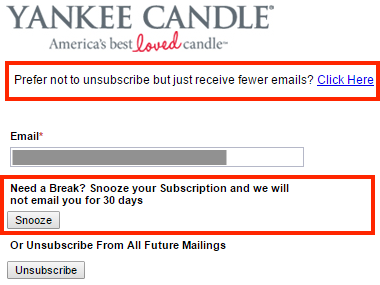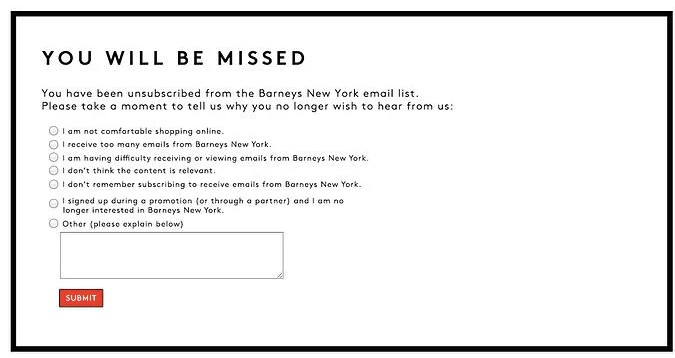Email marketers do not typically monitor why recipients unsubscribe. But the more we understand the reasons, the better we can reduce the number. In this post, I’ll explore how to analyze unsubscribes to improve email performance.
Unsubscribe directives — i.e., when a recipient clicks the “unsubscribe” link — are processed within 10 business days to comply with the U.S. CAN-SPAM Act of 2003. The sender must add unsubscribed email addresses to its overall suppression file to prevent future mailings.
There are two ways to unsubscribe, typically: with one-click (which immediately processes the request) or a 2-click process (which requires confirmation, usually on a web page).
Analysis
In my experience, commercial email marketing programs have unsubscribe rates of less than 1 percent — for every 1,000 emails, fewer than 10 recipients will unsubscribe. However, rates vary dramatically by brand, industry, and email type. For example, marketing emails usually have a higher unsubscribe rate than a transactional message, such as a shipping notice.
Marketers should track and benchmark unsubscribe rates as a key performance indicator, similar to open and click percentages.
To analyze, gather info about the person and the circumstances surrounding the unsubscribe. Common data points include:
- Source of the subscription, such as from organic search, affiliates, or contests.
- Number of emails received by the recipient before opting out.
- How long the recipient was subscribed.
- The recipient’s opens and clicks.
- Website visits and views.
- Purchase history, if any.
- The last email received before unsubscribing.
Next, try to identify trends and patterns associated with unsubscribes. Typical reasons include:
- Frequency. Receiving too many emails from your brand and, likely, others.
- Contest or offer. The recipient signed up only for an incentive, such as a contest or offer.
- No longer relevant. The brand’s products or services are no longer needed. An example is maternity clothes.
- Outside factors, such as a job loss.
Learnings
Legitimate email subscribers are extremely valuable. They drive significant revenue for most ecommerce companies. Apply your findings from above to lower unsubscribes and create a more positive experience in general.
For example, consider deleting or adjusting specific opt-in sources (such as affiliate sites) that generate a disproportionate number of unsubscribes. Likewise, immediate unsubscribes could indicate that folks are responding only to an incentive, not your content.
Unsubscribes from long-term customers could indicate too-high product pricing, shipping delays, or better offers from competitors. I’ve seen poor creative content and confusing templates drive unsubscribes, too.
For additional insights, offer unsubscribe options, such as pausing emails, reducing the frequency, or selecting the types of emails to receive.

Yankee Candle offers options to receive fewer emails and to “snooze” a subscription for 30 days.
—
Similarly, surveys on the opt-out page can help, such as the example below from Barneys, the department store.

Barneys displays a survey after each email unsubscribe.




